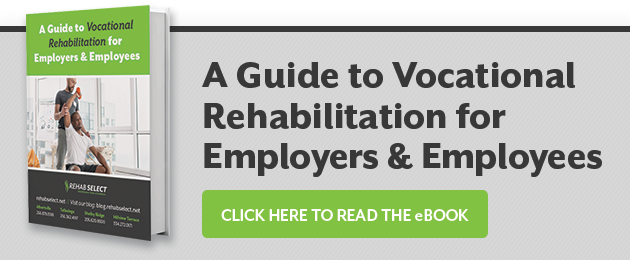 Workers comp physical therapy is a mode of treatment that works to improve recoveries and overall functional outcomes after a workplace injury. An effective, responsive and cost-efficient workers comp physical therapy program can be helpful in a number of ways during the recovery process to all involved parties, including the injured worker, their employer and the employer’s workers comp insurance provider.
Workers comp physical therapy is a mode of treatment that works to improve recoveries and overall functional outcomes after a workplace injury. An effective, responsive and cost-efficient workers comp physical therapy program can be helpful in a number of ways during the recovery process to all involved parties, including the injured worker, their employer and the employer’s workers comp insurance provider.
Here, we’ll outline some specific ways it can help in workers comp injury cases.
7 Ways Workers Comp Physical Therapy Can Be Helpful to Injured Workers
A solid, results-oriented worker’s comp physical therapy program can be helpful to workers as they recover from workplace injuries in many ways, including:
-
Helping to restore normal range of motion lost to injury
-
Reducing injury-related pain and stiffness
-
Helping workers restore strength, flexibility, endurance and functional ability lost to injury
-
Speeding recovery and rehabilitation in the aftermath of workplace injuries
-
Working to promote more complete recovery than can generally be accomplished with just rest and medical care
-
Helping to reduce risk of re-injury through physical conditioning and patient education
-
Advising and assisting in the planning of appropriate light duty/transitional positions and/or workplace accommodations during the recovery period to help injured employees for a quicker, more successful return to work
7 Ways Workers Comp Physical Therapy Can Benefit Employers and Insurance Carriers
A quality workers comp physical therapy program can offer a number of benefits to employers and their workers comp insurance carriers as well. Using these services, when appropriate, as part of recovery/return to work planning in workers comp cases can be helpful in:
-
Providing objective assessments of the overall condition, level of physical function and recovery/rehabilitation progress of injured employees throughout treatment, taking much of the guesswork out of return to work planning
-
Improving retention of injured employees through improved health and functional outcomes, helping employers reduce the costs associated with hiring and training replacements for experienced workers
-
Reducing lost work time, and therefore lost productivity, after workplace injuries
-
Providing expert advice/assistance in the provision of appropriate light duty/transitional positions and/or workplace accommodations to ease injured employees back into the workforce safely and efficiently
-
Helping to reduce or contain workers comp costs by restoring injured employees to productivity as quickly as is medically advisable
-
Increasing workplace safety by educating injured employees on injury/re-injury prevention
-
Providing peace of mind to employers with the knowledge that they are providing their valued employees with effective, high quality and cost efficient care as they recover from workplace injuries





